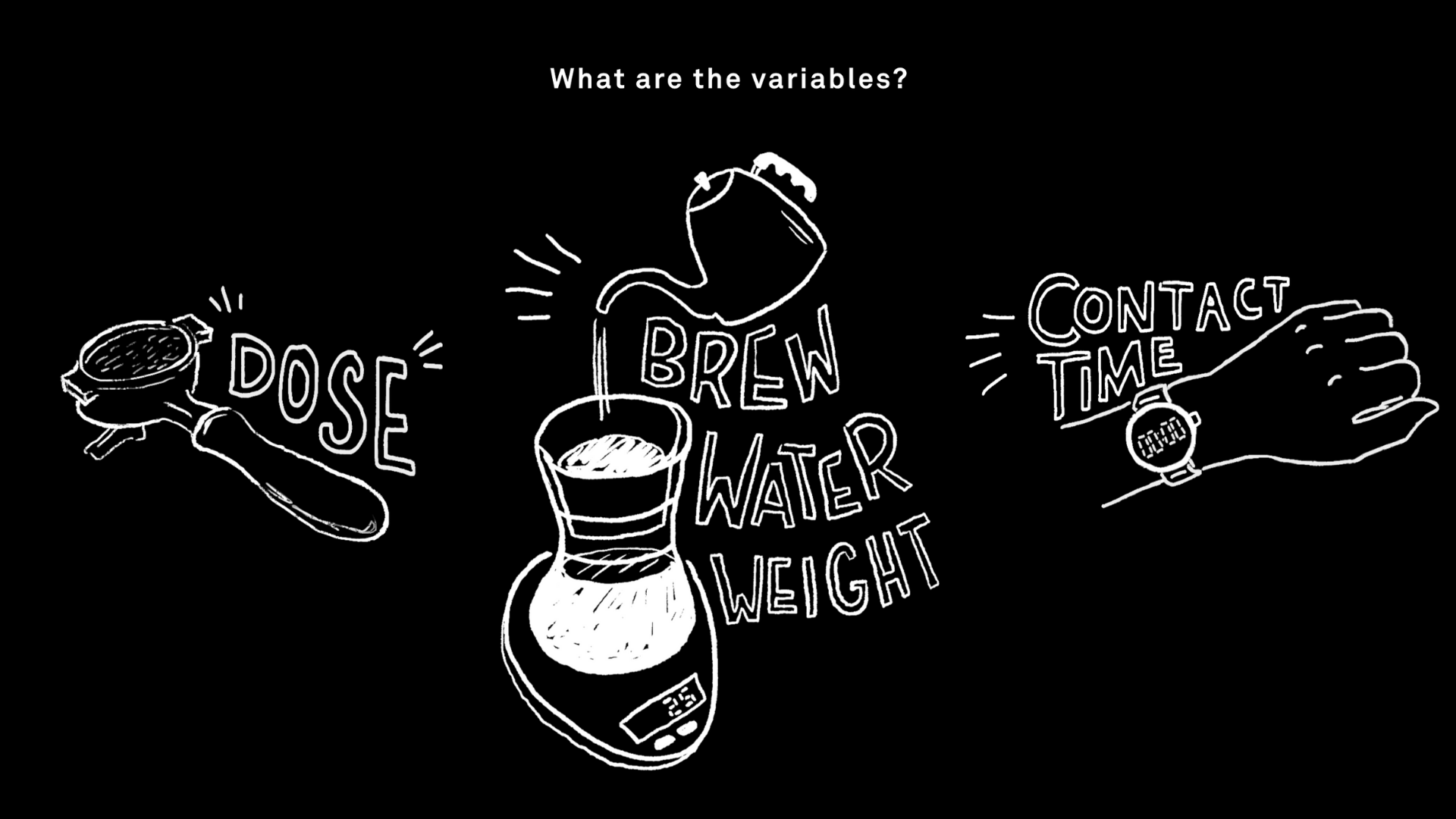# Barista Guides | Filter Basics

# Filter Basics
Dialing in filter coffee is surprisingly similar to espresso, but there are a few significant differences that are super important to understand.
Just like espresso we have three main variables that we use to control the flavour of our filter brew:
Dose Dose is the weight of the ground coffee on a set of scales. This should remain as constant as possible to eliminate extra variables from affecting the flavour of the coffee. Your dose will affect is how much coffee you start with - for this reason it’s much easier to just decide on a dose and alter the amount of brew water you use to create a bigger or smaller beverage. If you have a set recipe and underdose or overdose, you will over-extract or under-extract the coffee.
Brew Water Weight This refers to the amount of water that you use to brew your coffee with. This is usually measured with the brewing apparatus and decanter sitting on a set of scales. This will determine the type of flavour you extract and is the most important variable to change when making filter coffee. Lower volumes will taste ‘under-extracted’ which often tastes sour, salty and rich. Higher volumes will taste ‘over-extracted’ which often tastes bitter, woody, dry or watery.
Brew Time This is the amount of time the coffee takes to brew. You can control this variable by changing your grind-size, or pouring technique. Brew time mainly determines the concentration or strength of flavour you extract. Higher brew times will result in richer, more concentrated, bigger body shots. Lower brew times will result in lighter, more balanced, less concentrated shots. Higher or lower brew times will also play a part in making your coffee taste over or under extracted, but not as much as brew water weight.
BREWING DEVICES
Different brewing devices will behave differently. We can separate brewing devices into three categories - Flat Bed, Cone Shaped & Immersion.
Flat Bed Flat bed brewing devices such as the Kalita’s are easiest to control with using multiple small volume pulses with your kettle. Flat bed brewers almost always take approximately 30 seconds longer than cone shaped brewers to complete. We recommend a recipe of: 12g coffee, 200-210ml water & 3:00-4:00 brew time.
Cone Shaped Brewing devices such as the Hario V60 work best using three or four pours of a consistent volume. Agitating the bloom with a spoon will aid with extraction. We recommend a recipe of: 12g coffee, 200-210ml water & 2:30 - 3:00 brew time.
Immersion Immersion brewers such as an Aeropress are the easiest brewing devices to use. We recommend grinding slightly finer than other devices and steeping for a much longer time as these brewers don’t use gravity to aid in extraction. We recommend a recipe of: 12g coffee, 200-210ml water & 4:00-5:00 brew time.
COMMON ISSUES
Brew too weak If your resulting brew is too weak or watery it could mean one of two things: the brew time was too short or the grind was too coarse. Try first extending your brew time, if that doesn’t fix the issue then grind finer until the brew tastes less watery.
Brew too strong/rich If the brew is too rich or strong then grinding coarser or brewing for a shorter period of time should easily fix the issue.
Tastes sour/muddled This taste is usually caused by under-extraction. If this is the case try using more water, grinding finer or increasing your brew time.
Tastes dry, bitter or 'dirty' Usually caused by over-extraction. Try using less water, grinding coarser or decreasing your brew time.
Flow of water 'choking' This is an issue unique to flat-bed and some cone-shaped brewing devices. If this is a consistent problem it may indicate that you need to grind your coffee coarser or pour in smaller, more frequent pulses to make the force of gravity more constant, thereby increasing flow-rate.